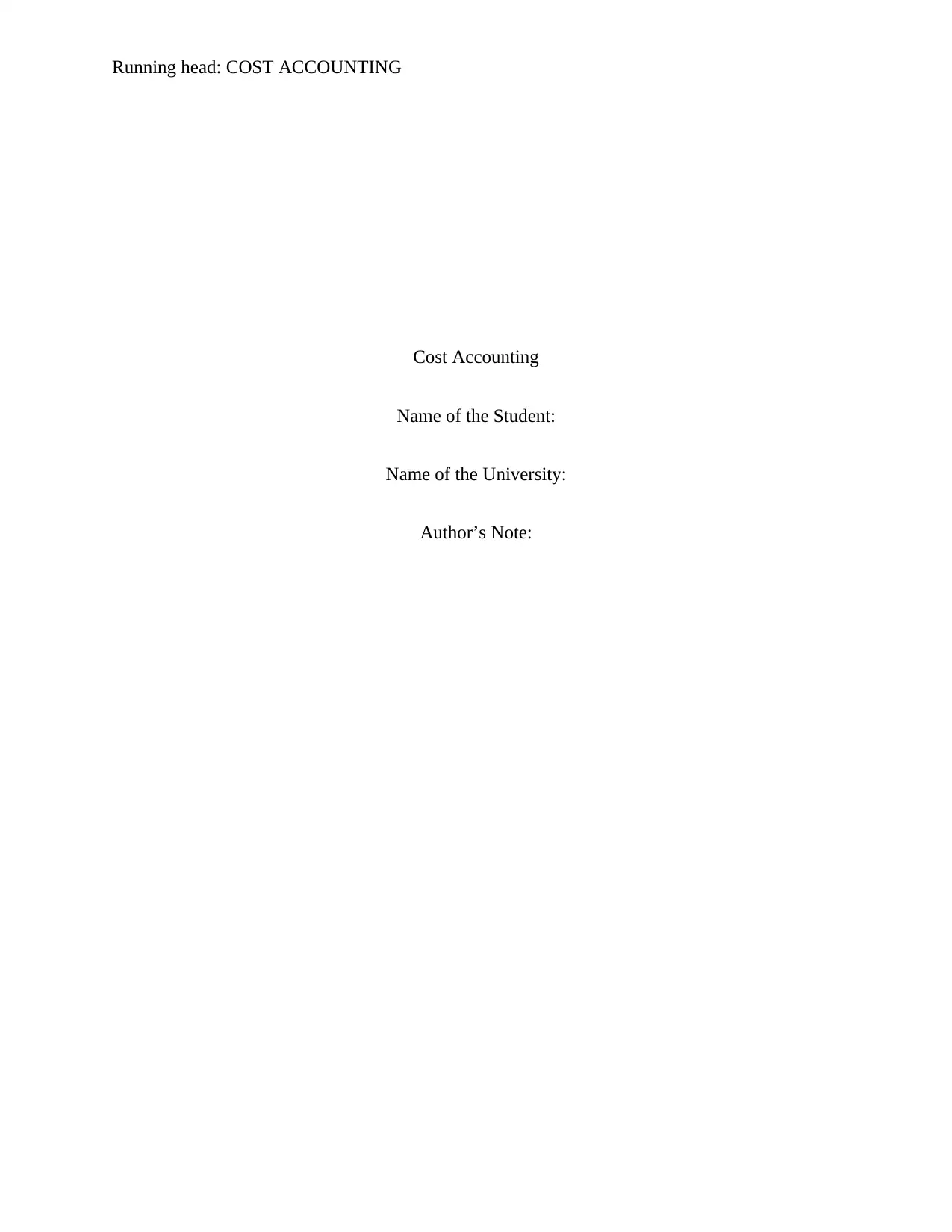Cost Accounting Report: Analysis, Discussion, and Decision Making
VerifiedAdded on 2023/04/20
|5
|465
|465
Report
AI Summary
This report delves into the core concepts of cost accounting, focusing on the analysis of costs to inform managerial decisions. It examines differential costing, comparing costs of different production options, including both variable and fixed costs, to determine the most financially beneficial choice. The report emphasizes the importance of considering all relevant costs when making production-related decisions, highlighting the potential benefits of accepting orders priced below total cost if they exceed variable costs and do not incur additional fixed costs. It concludes by underscoring the significance of cost analysis in optimizing production strategies and maximizing profitability. The report also includes references to relevant academic literature supporting the presented concepts.
1 out of 5












![[object Object]](/_next/static/media/star-bottom.7253800d.svg)